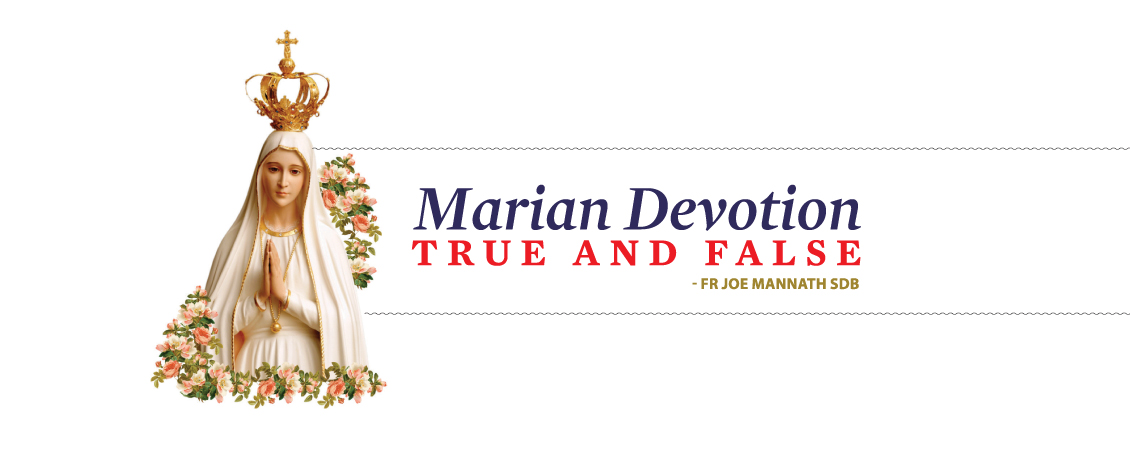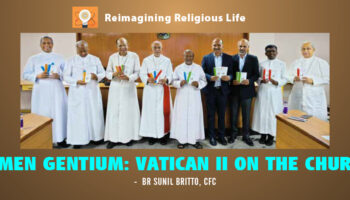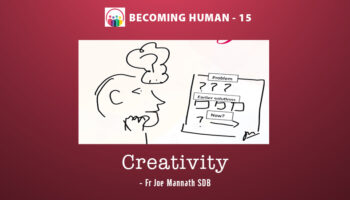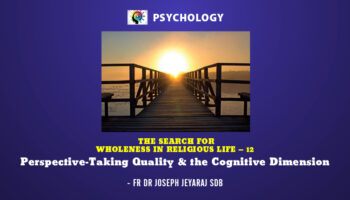The month of May is a good time to check whether our devotion to Mary is proper, exaggerated or misguided.
Heartfelt devotion and contemptuous rejection
“When I am upset and afraid,” Rani, a thirty-year-old accountant says, “I know something that brings me peace and strength. I talk to Our Lady. I feel very free to tell her everything—everything I go through, the fears and worries in my mind. At times I do this aloud, if no one else is around. At the end of this outpouring, I feel calm and strong.”
Rani’s experience is shared by millions of people around the world—not only by Catholics, but by many men and women of different faiths.
Quite opposite is the case of Jacinta, once a devout Catholic who had great confidence in Our Lady, who now belongs to a fiercely anti-Catholic sect. Jacinta has been so thoroughly brain-washed by this sect’s leaders that she will not step into a Catholic church. She sees it as the devil’s work. As for devotion of Mary, she sees it as a Catholic aberration.
Lalitha, a bright Brahmin woman, tells me: “When I was in college, I learned the Hail Mary from one of my Catholic class mates. I like this prayer very much. A few months ago, I was going through a bad patch, and feeling quite lost. I would keep repeating the Hail Mary. I don’t know how many Hail Mary’s I recited during that time. It gave me healing and peace.”
A picture of Our Lady once appeared in a most unlikely place—on the cover of Time, the world’s most famous news magazine. The cover story discussed the discovery of Mary by contemporary feminists, who saw in Marian devotion the central role of the feminine in human life, including our religious quest.
At the other extreme are thinkers who pooh-pooh the role of Mary or ignore it, either in their private life, or in their theological writings, or both. One possible reason for this neglect was given years ago by Karl Rahner, the most famous Catholic theologian of the twentieth century. “For some people,” Rahner mused, “Religion is an abstraction; and an abstraction does not need a mother.”
This month (May) is traditionally observed as the month of Mary. A meaningful Marian devotion is something sane and healing that can deepen our journey to God. How?
The Essentials
One: by taking Mary as the model of prayer. An artist who enjoys designing chapels says: “I want to place a statue of Our Lady to one side of the chapel. Mary is not the centre of our prayer life; God is. But, as we come to pray, and as we leave the chapel, she is a good reminder of what prayer is: She listened, believed and said Yes to God; then she rushed to help someone who needed her. This is the essence of prayer, isn’t it?” What this artist understood is exactly what we recall every day in the Angelus: May, the model of faith, who listened to God, trusted God, said a whole-hearted Yes, and then rushed to help the one in need. This, in graphic summary is what our Christian vocation is. She is simply the best model of discipleship. She is neither above the human race or outside it.
Secondly: Mary summarizes in her person what each of us is called to become, namely, a channel of mediation, sacramentality and communion. If, like her, we mediate God’s love to those around us; if we too are sacraments (visible signs and bearers) of God’s love in our daily life; and if we promote communion wherever we go, as she did, we will be true followers of Christ. (If the reader wants to learn more about this triple role of Mary, see Richard McBrien’s Catholicism, a much-acclaimed book.)
Exaggerated Marian outpourings or incorrect presentations of her role has put off people, both inside and outside the Church. Think of the following type of foolish story.
A man who has lived a very bad life dies, and is going to be judged. Given his awful record, he is not supposed to get into heaven. When God asks Saint Peter how this bad guy had got in, Peter replies: “Whenever I close a door, your Mother opens a window.”
This is a silly and basically anti-Catholic story. The implication is that God is strict and stingy, while Mary tones down His justice with her motherly compassion. To paint God as an unrelenting and frightening father figure, in contrast to a sweet and tender Mary is an insult to our faith and to our intelligence. It runs counter to the Bible. There is nothing so deep and reliable as God’s tender love for us. There is no one who loves us as deeply and as tenderly as God does. God does not need to be coaxed into loving or forgiving us. If our so-called Marian devotion were to pit an angry, ill-tempered God against a sweet and gentle mother figure, this would really be idiotic. It would be a gross betrayal of our faith. It may reflect some silly preacher’s family experience; but this is not the God whose face Jesus showed us!
So, too, if we believe in the crucial role God assigned to a woman, we will cherish and respect not only Mary, the mother of Jesus, but all women, everywhere—something sadly lacking in our culture. In our convents and families, we will train women to be strong and courageous like Mary, not frightened weaklings.
Model of Faith
What about devotions in Mary’s honour?
These, too, are meant to help us get closer to Jesus. The rosary, for instance, is a simple way to meditate (with Mary) on Jesus’ life, death and ultimate victory. It reminds us of what Jesus did for us, and of our own destiny. In Mary God summarized graphically what He longs to do in each of us.
If our Marian (or any other) devotion gets us closer to the Lord and makes us more committed to doing His will, it is a fine and Catholic thing. If it is reduced to near magic rites, flashing lights and picture-kissing, sentimental hymns without the practice of love, it is idolatry, not devotion. Such practices need to be criticized and rejected, in favour of a Christ-centred Marian devotion—which is what the Catholic church teaches.
Mary is not a dispensable addition, but an integral part of our faith. Mary summarizes in a gentle, non-threatening way, which both the scholar and the illiterates can follow, what it means to live a life of faith. She lived a hard and demanding life, where the pain was intense and the cost of discipleship high, without public acclaim or great visible achievements. That is what life is for most people—though the cross is lighter for most of us than it was for her. In one word, Mary shows us concretely and directly the saving truths that are central, and does it better than books and lectures can. No wonder Catholics down the ages—as well as an increasing number of persons of other faiths—find solace, meaning and joy in learning from Mary, in praying to her, and in listening to God as she did. No wonder the crowds still come, many with tears in their eyes—and return home with a lighter heart.

To subscribe to the magazine Contact Us





